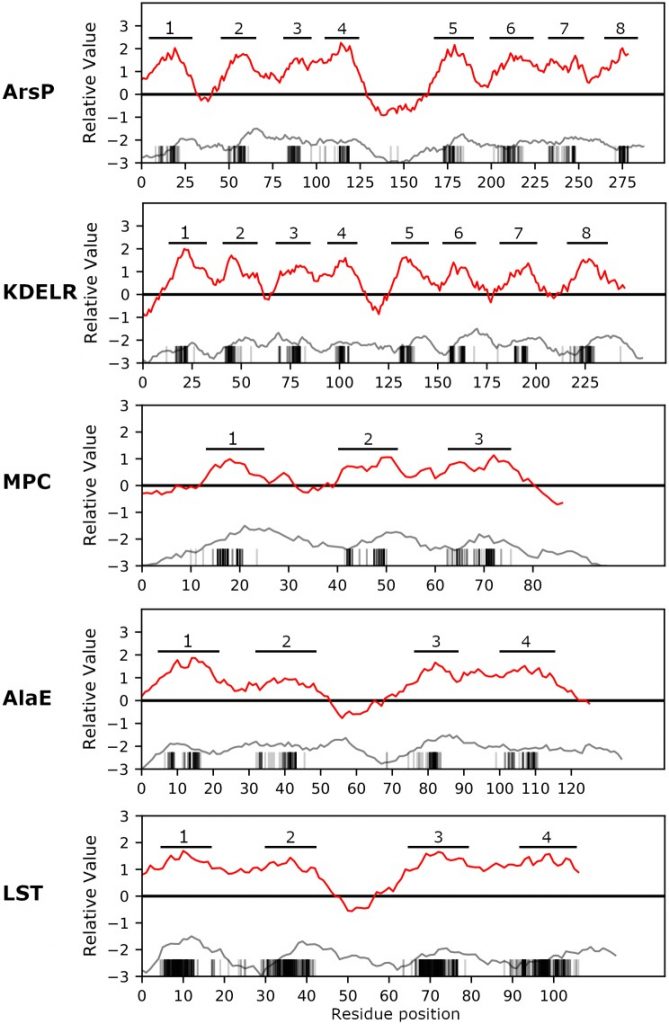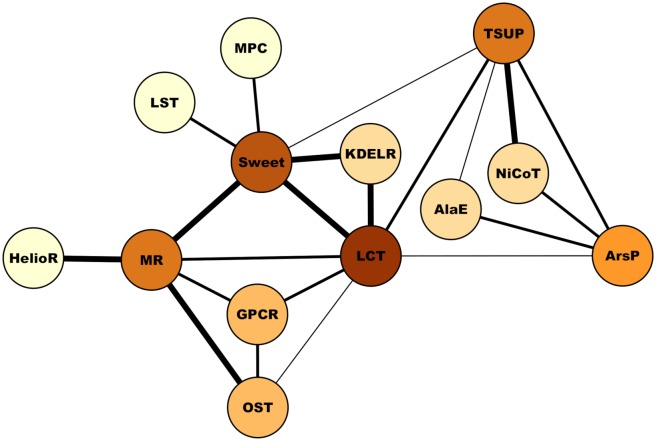Dr. Medrano-Soto, grad student F. Ghazhi, grad student K. J. Hendargo, collaborator Dr. Moreno-Hagelsieb, grad student S. Myers and Dr. Saier just published a paper in the journal PLOS ONE about the expansion of the TOG Superfamily. The title is: “Expansion of the Transporter-Opsin-G protein-coupled receptor superfamily with five new protein families“. For your convenience, these are the links to PubMed and PMC.
Abstract
Here we provide bioinformatic evidence that the Organo-Arsenical Exporter (ArsP), Endoplasmic Reticulum Retention Receptor (KDELR), Mitochondrial Pyruvate Carrier (MPC), L-Alanine Exporter (AlaE), and the Lipid-linked Sugar Translocase (LST) protein families are members of the Transporter-Opsin-G Protein-coupled Receptor (TOG) Superfamily. These families share domains homologous to well-established TOG superfamily members, and their topologies of transmembranal segments (TMSs) are compatible with the basic 4-TMS repeat unit characteristic of this Superfamily. These repeat units tend to occur twice in proteins as a result of intragenic duplication events, often with subsequent gain/loss of TMSs in many superfamily members. Transporters within the ArsP family allow microbial pathogens to expel toxic arsenic compounds from the cell. Members of the KDELR family are involved in the selective retrieval of proteins that reside in the endoplasmic reticulum. Proteins of the MPC family are involved in the transport of pyruvate into mitochondria, providing the organelle with a major oxidative fuel. Members of family AlaE excrete L-alanine from the cell. Members of the LST family are involved in the translocation of lipid-linked glucose across the membrane. These five families substantially expand the range of substrates of transport carriers in the superfamily, although KDEL receptors have no known transport function. Clustering of protein sequences reveals the relationships among families, and the resulting tree correlates well with the degrees of sequence similarity documented between families. The analyses and programs developed to detect distant relatedness, provide insights into the structural, functional, and evolutionary relationships that exist between families of the TOG superfamily, and should be of value to many other investigators.



